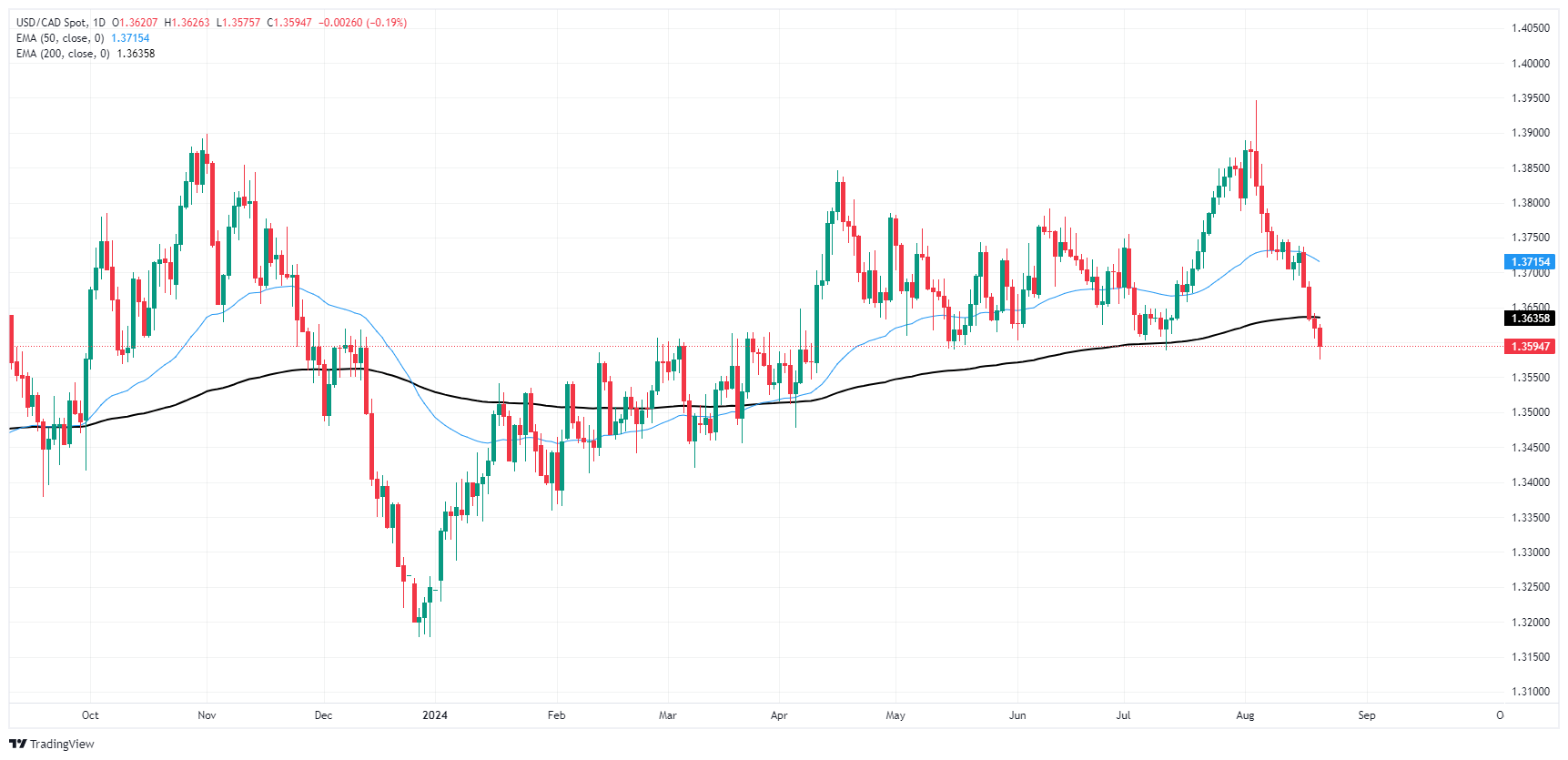- The Canadian Dollar rose on Wednesday, buoyed by Greenback weakness.
- Canada reported an upswing in housing prices, bolstering the CAD further.
- Broader markets are pivoting to the start of this year’s Jackson Hole economic summit.
The Canadian Dollar (CAD) found some legroom on Wednesday, rising against key counter-currencies through the US market session and extended a recent win streak against the US Dollar as broad market sentiment pins on the high end with investors anticipating a shift in the Federal Reserve’s (Fed) rate cut stance.
Canada reported a slight upswing in recent housing price figures, prompting a thin bullish bid in the Canadian Dollar. The CAD has eased into a multi-month high against the Greenback, and is clawing back recent losses against other major currencies in recent days.
Daily digest market movers: Canadian Dollar finds the high side on higher housing prices
- The Canadian New Housing Price Index rose 0.1% YoY in July, over and above the previous -0.2% contraction.
- The Canadian Raw Material Price Index also rose in July, accelerating 0.7% versus the forecast -0.9% and improving from the previous month’s -1.4% backslide.
- The US Bureau of Labor Statistics introduced a sharp revision to March’s Nonfarm Payrolls (NFP), cutting the initial print by over 800K jobs.
- The Fed’s latest Meeting Minutes revealed that the US central bank had already begun discussions about when to deliver rate cuts as early as July.
- The out-of-cycle NFP adjustment and dovish Fed print help to drive market bets of a September rate cut even higher.
- Nearly half of all rate traders now expect a double cut for 50 bps from the Fed on September 18.
Canadian Dollar price forecast: USD/CAD bulls set to run out of steam below 1.3600
The Canadian Dollar (CAD) rose one-fifth of one percent against the US Dollar on Wednesday, chalking in a fourth straight gain against the Greenback. The CAD has closed higher against the USD for all but three of the last 14 straight trading days, and has recovered 2.66% bottom-to-top against the Greenback after hitting a 22-month low earlier this month.
USD/CAD pierced below the 1.3600 handle, and has extended a decline below the 200-day Exponential Moving Average (EMA) at 1.3640. The pair is running into oversold territory, but a sharp pullback from April’s technical range prices could see a topside draw in the coming days.
USD/CAD daily chart
Canadian Dollar FAQs
The key factors driving the Canadian Dollar (CAD) are the level of interest rates set by the Bank of Canada (BoC), the price of Oil, Canada’s largest export, the health of its economy, inflation and the Trade Balance, which is the difference between the value of Canada’s exports versus its imports. Other factors include market sentiment – whether investors are taking on more risky assets (risk-on) or seeking safe-havens (risk-off) – with risk-on being CAD-positive. As its largest trading partner, the health of the US economy is also a key factor influencing the Canadian Dollar.
The Bank of Canada (BoC) has a significant influence on the Canadian Dollar by setting the level of interest rates that banks can lend to one another. This influences the level of interest rates for everyone. The main goal of the BoC is to maintain inflation at 1-3% by adjusting interest rates up or down. Relatively higher interest rates tend to be positive for the CAD. The Bank of Canada can also use quantitative easing and tightening to influence credit conditions, with the former CAD-negative and the latter CAD-positive.
The price of Oil is a key factor impacting the value of the Canadian Dollar. Petroleum is Canada’s biggest export, so Oil price tends to have an immediate impact on the CAD value. Generally, if Oil price rises CAD also goes up, as aggregate demand for the currency increases. The opposite is the case if the price of Oil falls. Higher Oil prices also tend to result in a greater likelihood of a positive Trade Balance, which is also supportive of the CAD.
While inflation had always traditionally been thought of as a negative factor for a currency since it lowers the value of money, the opposite has actually been the case in modern times with the relaxation of cross-border capital controls. Higher inflation tends to lead central banks to put up interest rates which attracts more capital inflows from global investors seeking a lucrative place to keep their money. This increases demand for the local currency, which in Canada’s case is the Canadian Dollar.
Macroeconomic data releases gauge the health of the economy and can have an impact on the Canadian Dollar. Indicators such as GDP, Manufacturing and Services PMIs, employment, and consumer sentiment surveys can all influence the direction of the CAD. A strong economy is good for the Canadian Dollar. Not only does it attract more foreign investment but it may encourage the Bank of Canada to put up interest rates, leading to a stronger currency. If economic data is weak, however, the CAD is likely to fall.


